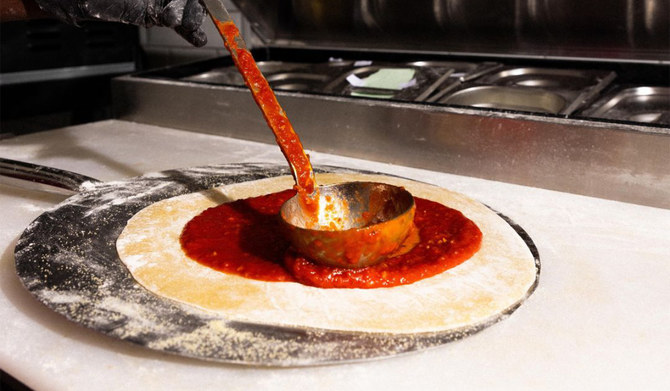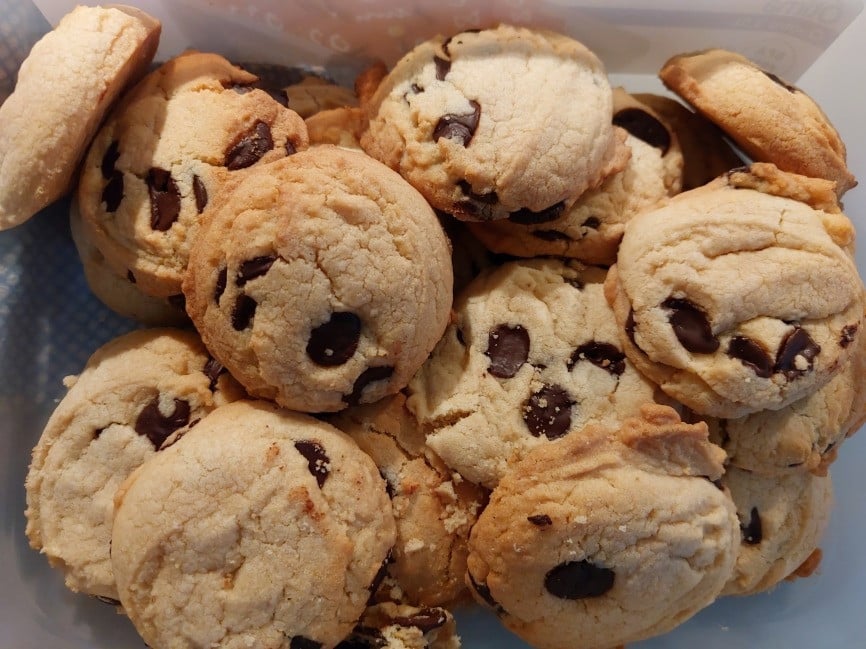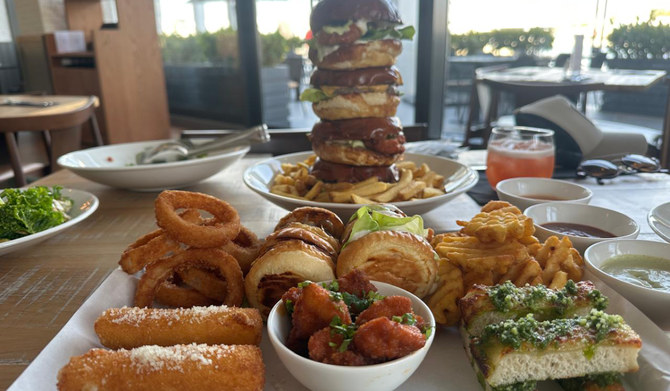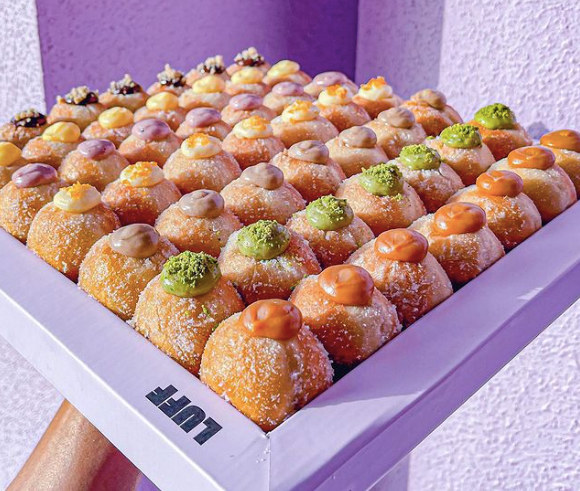
Felicity Cloake
Bannock, from the Gaelic bannach, was once a generic term for bread in the north and west of these islands, where wheat and ovens were in short supply. Though regional and historical variations abound (you can find a recipe for the fruitcake known as Selkirk bannock here), these days, if you see a bannock on a menu, perhaps paired with a bowl of soup, or with sausage and bacon, it will probably be a flattish quick bread not unlike a slightly squashed scone, cooked on a hot griddle and on your plate in mere minutes, ready to be loaded up with salty butter.
The (possibly partisan) baker James Morton describes the bannock as a “Shetlandic staple, claimed in name by many Scots cultures, but owned today by just one” – and certainly I’ve never enjoyed so many as on a recent trip to the UK’s most northerly outpost – but you don’t have to be at the same latitude as Greenland to appreciate the bannock’s fluffy charms. Quick, frugal and endlessly versatile, in a winter when few of us are rushing to turn on the oven, the bannock may well become your new best friend.
The flour
When I say they’re versatile, I really mean it. Bannocks, according to Regula Ysewijn, were made “with barley, oats and sometimes a proportion of rye – whatever grew to harvest” in northerly climes that were too cold and too wet for wheat; in the course of my research, I find recipes using all of these things and more. Ysewijn’s book Oats in the North, Wheat from the South even recommends chickpea flour, which is probably easier for many of us to find these days than pea flour or beremeal, an ancient form of barley now cultivated seriously only on Orkney and a handful of other places (but available to buy online). Morton, who devotes half a chapter of his book Shetland to bannocks, acknowledges that, until relatively recently, they would have been made with “whichever sorts of flour people could get their hands on”, but “nowadays, refined wheat flour is the primary ingredient of choice, because it’s the best. Honestly.”
Most modern recipes do indeed call for wheat flour, and if they’re from Shetland, they often express a strong preference for “‘Voe flour’, a bleached, bicarbonate-heavy white flour” made in the village of the same name. In the interests of tradition, I try Ysewijn’s version, using one part wheat to four parts barley flour, and some mealy bannocks from Aberdeenshire from Catherine Brown’s collection Broths to Bannocks, which use fine oatmeal. The latter turn out to be something more reminiscent of the floppy oat pancakes found in the Potteries, which just goes to show that bannocks do indeed come in many forms, all delicious, but the flavour, like those of Ysewijn’s, is undeniably more complex and interesting than the all-wheat versions. That said, sometimes you just want something white and fluffy, so I’ve provided two options in my recipe below – one a good substitute for a standard roll, the other a little more distinctive.
The raising agents
Whether bannocks, like scones, were unleavened before bicarbonate of soda came on to the scene, as the Oxford Companion to Food claims, or whether they were sourdough, made with a little of the dough from the previous batch, as Ysewijn suggests, or whether both methods were used in different circumstances, these days, they’re almost always chemically raised. This makes sense – nothing that involves waiting for yeast to do its thing can be fairly described as a “quick bread” – but, as Morton notes, “bicarb alone will give insufficient rise for all but the densest of dense bannock lovers”, so most recipes also use baking powder, which is often contained within self-raising flour, and some also add cream of tartar for good measure.
Indeed, Scottish cookery writer Sue Lawrence, who collected her recipe from Isabel Johnson of Vidlin, Shetland, uses self-raising flour, extra baking powder and cream of tartar, which gives her bannocks a deliciously springy, almost crumpet-like texture that reminds me of the north-eastern stottie. For maximum fluffiness, however, I’m going to stick with self-raising flour and a little extra bicarb for height, as Morton recommends. If you only have plain flour, then include three teaspoons of baking powder along with the bicarb.
The liquid
Almost all bannock recipes call for buttermilk, which supplies the acid that the bicarb needs to get to work, and tastes great, too, unless it’s the gloopy stuff that’s sold as buttermilk in most British supermarkets these days, and that is mysteriously sour and unpleasant. It will, however, work fine in bannocks (indeed, you could use just milk and a dash of lemon juice or vinegar instead), but I’d recommend seeking out the kind of buttermilk that’s liquid enough to drink and tasty enough to make that worthwhile. Many smaller dairies produce it and sell it online, and it’s easily found in eastern European specialist food stores. Morton uses a mixture of half buttermilk, half whole milk, but, as a devotee of the former’s assertive tang, I’m going for it alone. I do heed his tip that the lightest bannocks are made from the wettest batter, though – if you really struggle, you could add more flour, but I’d recommend being brave and liberal with the flour on your work surface, knife and hands to make the dough easier to handle.
The extras

In further proof of the bannock’s mercurial identity, some iterations stray into scone territory, incorporating butter and even eggs – Peter Sinclair, whose superior bannock-making skills are confirmed by no less a publication than the Shetland Times, uses buttermilk, butter, eggs and natural yoghurt in his absolutely outrageously fluffy versions. They’re utterly lovely, but, to me, they lack the plain, muscular charm of the simpler variety, though he does inspire me to add a pinch of sugar to balance the bitterness of the bicarb and the tang of the buttermilk. For a special occasion, though, I heartily recommend them.
The mixing and cooking
Sinclair is adamant that the usual admonitions against overworking the mixture are unhelpful here; in fact, he actually kneads it on the basis that the final batch of bannocks, made from the rerolled scraps, is always better than the first. Though I defer to his considerable expertise with his own recipe, my plainer dough is better handled as little as possible, mostly because it’s so very sticky that every touch involves copious amounts of flour.
Sinclair and Lawrence both bake their bannocks, which give them a crustier exterior and a more impressive rise, but unless you’re putting on the oven anyway, it’s much more economical to cook them on the stovetop – a heavy, flat griddle is ideal, but a sturdy frying pan will do, as long as it’s well seasoned so the bannocks don’t stick. As with the consistency of the dough, the temperature of your particular pan on your particular hob is something you’ll have to feel for yourself – keep an eye on the bannocks as they’re cooking, and be ready to turn down the heat if you spot the flour beginning to burn (or, conversely, if they still look gooey in the centre, leave them on for longer than my suggested cooking time). Don’t forget to harn, or brown, the edges either – something none of the recipes I try seems to mention, but which was impressed upon me by Tracey Jeffery, who taught me to make Irish soda farls across the water in Co. Down. Leave them to cool slightly on a rack before tearing in two and topping with plenty of butter – they’re great with stew, soup, cheese, jam or simply yet more butter. If a double layer is good enough for Nigella, it’s good enough for me.
Perfect bannocks
Prep 5 min
Cook 12 min
Makes 4 large bannocks
250g self-raising flour, plus extra for dusting, or 150g self-raising and 100g oat/barley flour
½ tsp bicarbonate of soda (or 1 tsp if using oat/barley flour)
½ tsp fine salt
¼ tsp sugar (optional)
250ml buttermilk (if you’re using a non-wheat flour, you may need a little more)

Put the flour in a bowl and stir in the bicarb, salt and sugar, if using. Pour in the buttermilk to make a soft dough: the mix should be too sticky to come together into a ball.

Note that different flours vary in absorbency, so if it looks too liquid or too dry, adjust with a little more flour or buttermilk as required. Liberally flour a work surface and your hands, then tip out the dough and form it into a roughly 2cm-thick round.

Flour a knife and cut the round into quarters (or into smaller triangles, if you prefer).

Put a heavy-based griddle or frying pan on a medium-low heat. Test the heat by sprinkling a little flour over it; if it browns slowly, the pan is ready; if the flour burns, you’ll need to turn down the heat. Carefully lift the bannocks on to the pan, spacing them out as far as possible, and leave them to cook for five minutes, keeping an eye on the colour of the flour underneath them and turning down the heat if necessary.

Carefully turn over the bannocks – the bases should be brown, not black – and cook on the other side for another five minutes, or until cooked through. Stand each bannok up on its edges to brown the sides.

Put on a wire rack to cool slightly, then serve with lots of good butter.
Courtesy: theguardian
The post Energy-saving bread: how to make the perfect bannocks – recipe appeared first on The Frontier Post.








